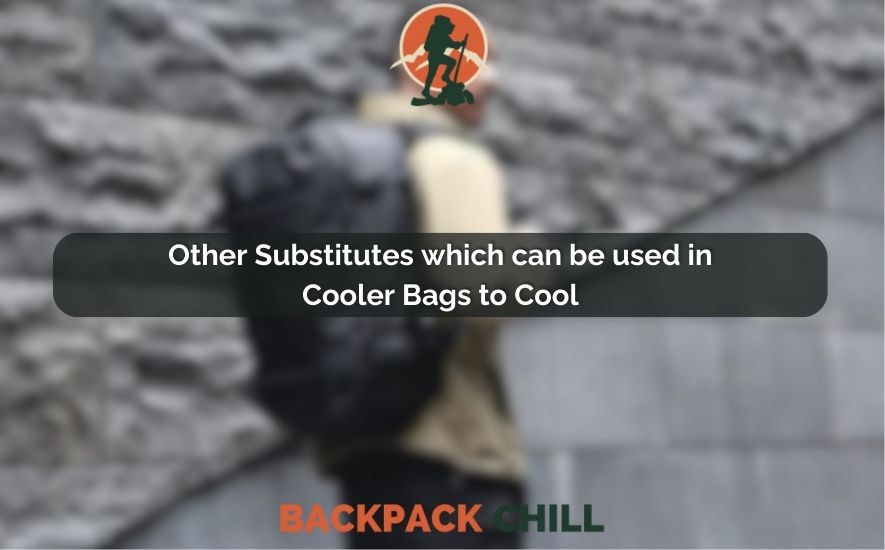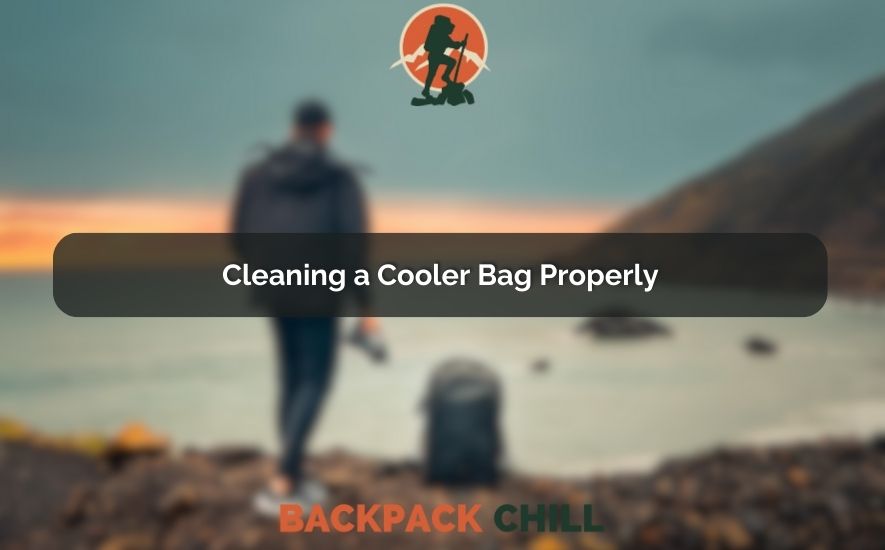Physical Address
304 North Cardinal St.
Dorchester Center, MA 02124
Physical Address
304 North Cardinal St.
Dorchester Center, MA 02124

When it comes to keeping things cool, cooler bags are a convenient solution for picnics, outings, and camping trips. But what about using dry ice? Many wonder if it’s safe to put dry ice in a cooler bag. Dry ice, a solid form of carbon dioxide, can be incredibly useful for keeping items chilled for longer periods due to its extremely low temperature.
Can You Put Dry Ice In A Cooler Bag? Using dry ice in a cooler bag is indeed possible and can be an effective method for keeping your items cold. Dry ice, with its subzero temperature of -78.5 degrees Celsius (-109.3 degrees Fahrenheit), can keep perishable goods and beverages colder for a longer time compared to traditional ice.
However, it’s important to understand the potential risks and considerations before using dry ice in a cooler bag. In this article, we will explore whether it is safe and practical to use dry ice in a cooler bag, and provide you with the necessary information to make an informed decision.
Dry ice, scientifically known as solid carbon dioxide (CO2), is formed by compressing and cooling carbon dioxide gas until it solidifies at -78.5 degrees Celsius (-109.3 degrees Fahrenheit). Unlike traditional ice, dry ice does not melt but undergoes sublimation, transitioning directly from a solid to a gas.
Dry ice offers significantly longer cooling durations compared to traditional ice packs. Its extremely cold temperature can keep perishable items chilled for an extended period, making it ideal for longer trips or outdoor events.
Dry ice doesn’t produce any liquid residue as it sublimates, eliminating the risk of items getting soggy or waterlogged in the cooler bag. This characteristic is particularly advantageous when storing delicate items such as electronics, documents, or medications.
Dry ice is more compact and space-efficient than regular ice packs, allowing for better organization and utilization of cooler bag space. It can be easily placed around the items in the bag, ensuring uniform cooling and maximizing the storage capacity.
Dry ice should always be handled with care and using appropriate safety precautions. It is crucial to wear protective gloves or use tongs when handling dry ice to prevent skin contact, as it can cause frostbite or burns.
When using dry ice in a cooler bag, ensure proper ventilation to prevent the buildup of carbon dioxide gas. This is particularly important in enclosed spaces like vehicles or tents. Keeping the bag partially open or using a cooler with ventilation ports can help maintain a safe environment.
Dry ice should never be consumed directly as it can cause harm. Its extremely cold temperature can damage tissues and organs if ingested. Always keep dry ice out of reach of children and pets.
Enhance the cooling efficiency of your cooler bag by using insulating materials such as foam inserts or thermal blankets. This helps minimize heat transfer from the external environment, prolonging the cooling effect of the dry ice.
Utilize a layering technique when packing the cooler bag. Start with a base layer of regular ice packs or frozen items, followed by a layer of dry ice. Alternate between dry ice and regular ice packs or frozen items until the bag is adequately filled. This method ensures a balanced distribution of cold temperatures within the cooler.
Regularly check the temperature inside the cooler bag to ensure it remains within the desired range. Use a thermometer or temperature-sensitive labels to monitor and maintain the optimal cold storage conditions.

Cooler bags are essential for keeping food and beverages cool while on the go, but what if you don’t have access to ice or traditional cooling packs? Fortunately, there are several innovative substitutes that can effectively cool your items.
One substitute for traditional ice packs is frozen gel packs. These packs contain a gel-like substance that freezes solid when placed in a freezer. They can maintain a low temperature for an extended period, providing efficient cooling. Additionally, gel packs are reusable and mess-free, making them a convenient option for cooler bags.
Reusable ice cubes are another practical alternative. These cubes are typically made from BPA-free plastic filled with a non-toxic cooling gel.
By freezing these cubes before use, they can keep your cooler bag cool without the mess of melting ice. Reusable ice cubes are available in various shapes and sizes, making them adaptable to different cooler bag configurations.
If you’re unable to obtain ice or cooling packs, consider using chilled water bottles as a substitute. By freezing water bottles before your trip, you can place them in your cooler bag to help maintain a lower temperature. As the ice melts, you’ll have refreshing water to drink, providing dual functionality.
Another effective approach is to include pre-frozen food and beverages in your cooler bag. By freezing items such as fruits, yogurt cups, or juice boxes before your journey, they can serve as cooling elements for other perishable items. This method not only keeps your food chilled but also ensures you have ready-to-eat snacks on hand.
If you have access to a refrigerator or a cold source, you can use cold packs as a substitute. These packs are designed to remain cold for an extended period once chilled. Place the cold packs in your cooler bag to maintain a cool environment for your perishables. Remember to wrap them in a towel or cloth to prevent direct contact with food items.
Insulated containers, such as thermos flasks or vacuum-sealed bottles, can provide an additional layer of insulation for your cooler bag.
These containers help retain the cold temperature of the contents inside. By storing chilled food or beverages in insulated containers before placing them in your cooler bag, you enhance the cooling efficiency and prolong the freshness of your items.

Cooling agents are vital components of cooler bags as they help regulate and maintain the internal temperature. They prevent the food and drinks from reaching unsafe temperatures, thus reducing the risk of spoilage and bacterial growth. By preserving the freshness and taste of perishable items, cooling agents ensure that we can enjoy our meals and beverages wherever we go.
Ice packs are a popular cooling agent used in cooler bags. These packs are filled with a gel-like substance that freezes at a lower temperature than water. They can be frozen beforehand and then placed inside the bag to keep the contents cold. Ice packs are reusable, easy to handle, and provide consistent cooling for an extended period.
Gel packs are similar to ice packs, but they contain a gel-like substance that stays flexible even when frozen. These packs are convenient as they can be molded to fit around the food items inside the bag, maximizing the cooling effect. Gel packs are often preferred for their pliability and ability to conform to the shape of the bag’s contents.
Traditional ice cubes made from frozen water are also commonly used in cooler bags. While they are readily available and inexpensive, ice cubes tend to melt faster than ice packs or gel packs. They require a waterproof liner or plastic bags to prevent leakage and keep the contents of the bag dry.
For longer trips or situations where a significant cooling effect is needed, dry ice can be used as a cooling agent. Dry ice is frozen carbon dioxide and has an extremely low temperature, making it highly effective at keeping the contents of a cooler bag cold. However, it requires careful handling and proper ventilation to prevent any potential hazards associated with carbon dioxide buildup.
The choice of cooling agent depends on various factors such as the duration of the trip, the desired temperature, and the available storage space. Ice packs and gel packs are generally suitable for shorter outings and can maintain cool temperatures for several hours.
Ice cubes are convenient for quick trips but may require additional precautions to prevent water leakage. Dry ice is ideal for extended journeys and situations where long-lasting, ultra-low temperatures are necessary.

A cooler bag is a handy accessory for keeping food and drinks cool during outings, picnics, and trips. However, to ensure its longevity and hygiene, it’s essential to clean the cooler bag regularly.
Before starting the cleaning process, empty the cooler bag completely. Remove any leftover food, ice, or beverage containers. Dispose of any perishable items properly.
Once empty, inspect the cooler bag for any spills or stains that require immediate attention. Take note of any removable parts or accessories that can be cleaned separately.
Using a mild detergent or dish soap, prepare a solution of warm water in a clean bucket or sink. Dip a soft cloth or sponge into the soapy water, wringing out excess moisture.
Gently wipe down the interior surfaces of the cooler bag, paying close attention to any soiled or stained areas. Take care not to scrub vigorously, as this may damage the bag’s lining. Rinse the cloth or sponge frequently and continue wiping until the interior is clean.
For stubborn stains or lingering odors, you can create a natural cleaning solution by mixing equal parts of white vinegar and water. Apply this solution to the affected areas and let it sit for a few minutes.
Scrub the stains gently using a soft brush or sponge. Vinegar is effective at eliminating odors and breaking down tough stains. Afterward, rinse the interior thoroughly with clean water to remove any residual vinegar.
Once the interior is clean, move on to the exterior of the cooler bag. Wipe down the outer surfaces using the same mild soapy water solution as before.
Pay attention to any dirt, grime, or spills. For tougher stains or marks, use a non-abrasive cleaner or a mixture of baking soda and water. Avoid using harsh chemicals or abrasive scrubbers, as they may damage the bag’s material.
After the cleaning process, ensure that the cooler bag is thoroughly dry before storing it. Leave it in a well-ventilated area with the zippers or openings open to allow air circulation. If possible, prop the bag open to facilitate faster drying. Once completely dry, fold the bag neatly and store it in a cool and dry place away from direct sunlight.
In conclusion, utilizing dry ice in a cooler bag can be a practical solution for keeping perishable items cold. However, it is crucial to exercise caution and follow proper safety measures to prevent any potential hazards. The sublimation process of dry ice, while providing extremely low temperatures, can lead to the accumulation of carbon dioxide gas, which may cause asphyxiation in poorly ventilated areas.
Therefore, it is recommended to ensure adequate ventilation when using dry ice and to never seal the cooler bag completely. By understanding these considerations and using dry ice responsibly, one can successfully harness its cooling properties for various purposes, such as camping trips, outdoor events, or transportation of temperature-sensitive items.
Yes, it is generally safe to put dry ice in a cooler. However, it is important to handle dry ice with caution and follow proper safety guidelines. Dry ice is extremely cold, reaching temperatures of around -78 degrees Celsius (-109 degrees Fahrenheit), and can cause frostbite or burns if handled directly.
When using dry ice in a cooler, make sure the area is well-ventilated to prevent the buildup of carbon dioxide gas, as dry ice sublimates and releases this gas. Additionally, do not seal the cooler completely, as the pressure from the carbon dioxide buildup can cause the cooler to burst. By taking these precautions, you can safely use dry ice in a cooler to keep your items cold.
The duration for which dry ice lasts in a cooler bag depends on various factors such as the quality of the cooler, the amount of dry ice used, the ambient temperature, and the insulation of the bag. On average, dry ice can last anywhere from 12 to 24 hours in a well-insulated cooler bag.
However, this duration can be extended by using thicker insulation, minimizing the opening of the bag, and adding additional layers of insulating material such as towels or blankets. It is always advisable to monitor the dry ice and the temperature inside the cooler bag regularly to ensure the desired cooling effect is maintained.
The duration for which 1kg of dry ice lasts depends on the conditions in which it is stored and used. On average, 1kg of dry ice can last approximately 18 to 24 hours. However, it is important to note that the rate of sublimation, or the process of solid carbon dioxide turning directly into gas, increases with time.
Factors such as the ambient temperature, the quality of the insulation, and the exposure to air affect the sublimation rate. To maximize the usage of 1kg of dry ice, it is recommended to store it in a well-insulated container or cooler, limit its exposure to warmer temperatures, and minimize the opening of the container to reduce air exchange.
When dry ice is placed in a bag, it undergoes a process called sublimation. Sublimation is the direct transition of a solid into a gas, bypassing the liquid phase. As the dry ice warms up, it sublimates and releases carbon dioxide gas. The bag containing the dry ice will start to inflate or bulge due to the gas buildup.
It is important to allow for ventilation or create small openings in the bag to prevent excessive pressure from building up. The released carbon dioxide gas is denser than air, so it tends to sink and displace oxygen.
In enclosed spaces, such as a sealed bag, this can create a potential risk of asphyxiation if there is not enough oxygen available. Therefore, it is crucial to handle dry ice in a bag in a well-ventilated area to ensure the safe release of carbon dioxide gas.